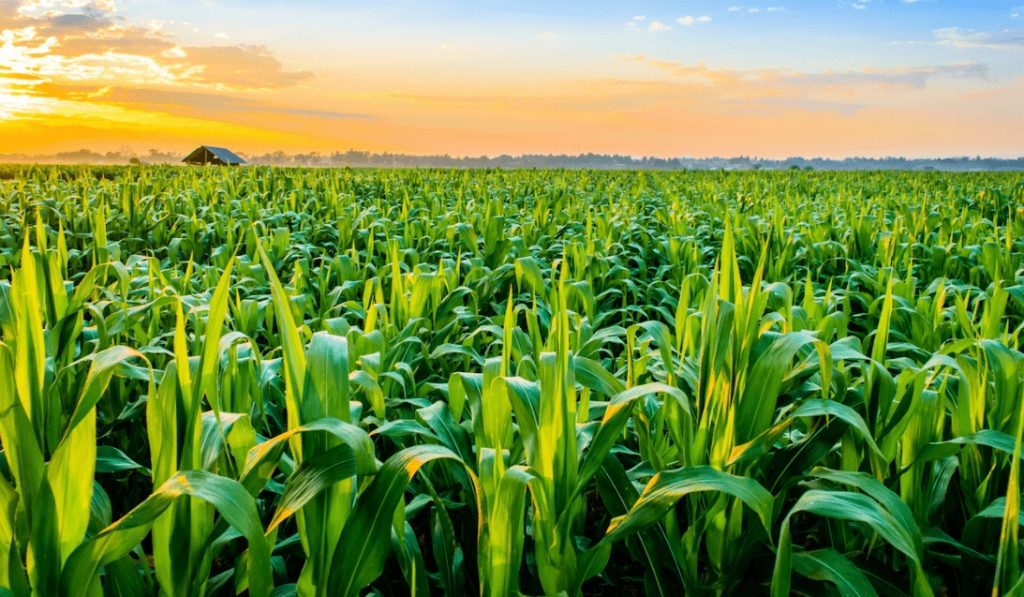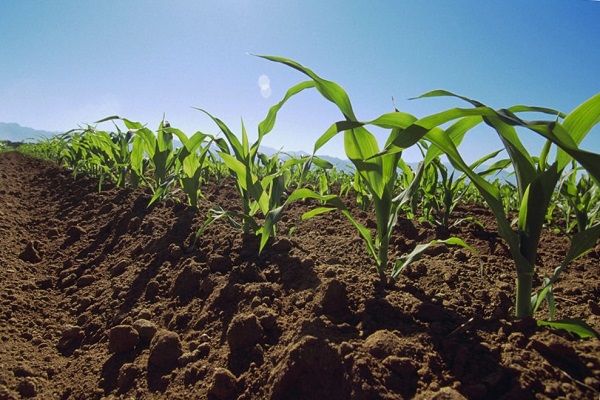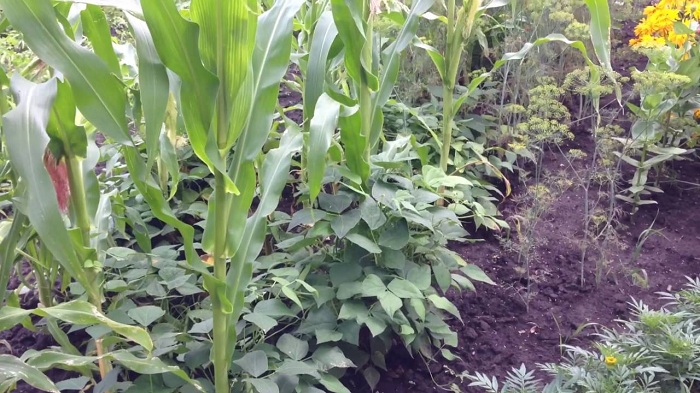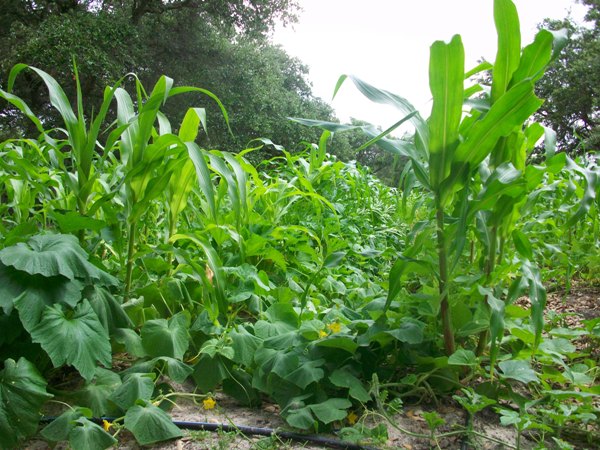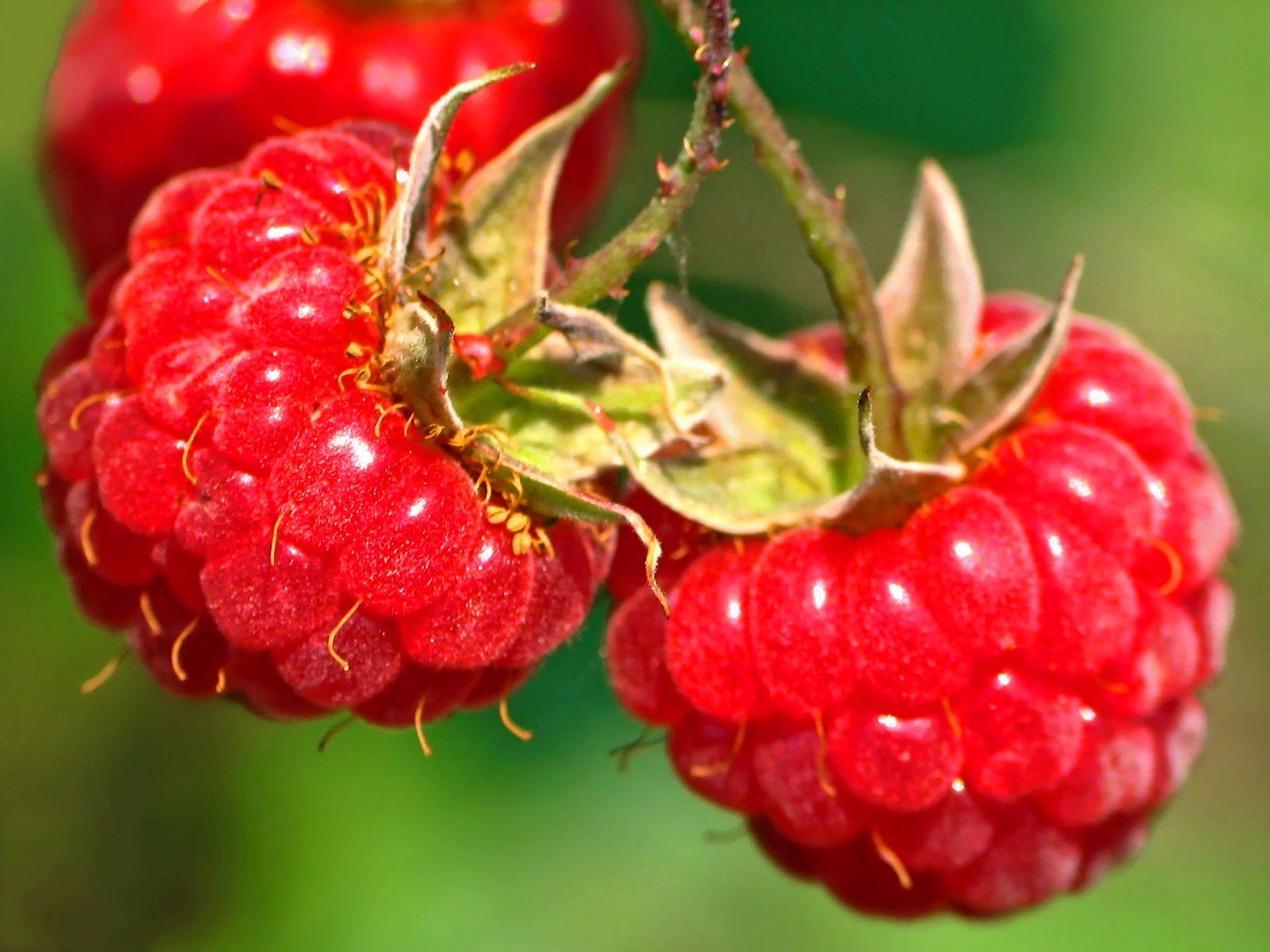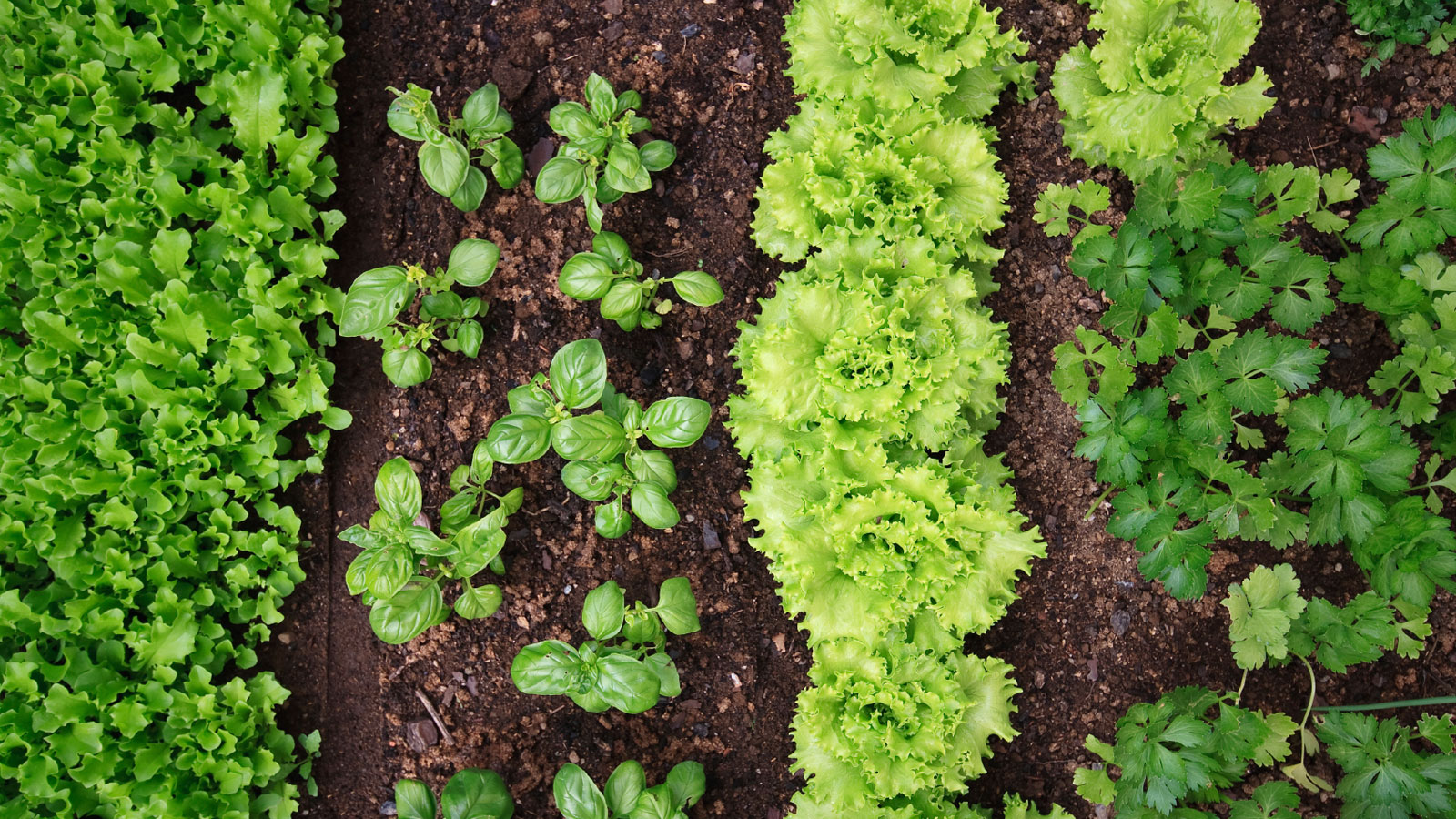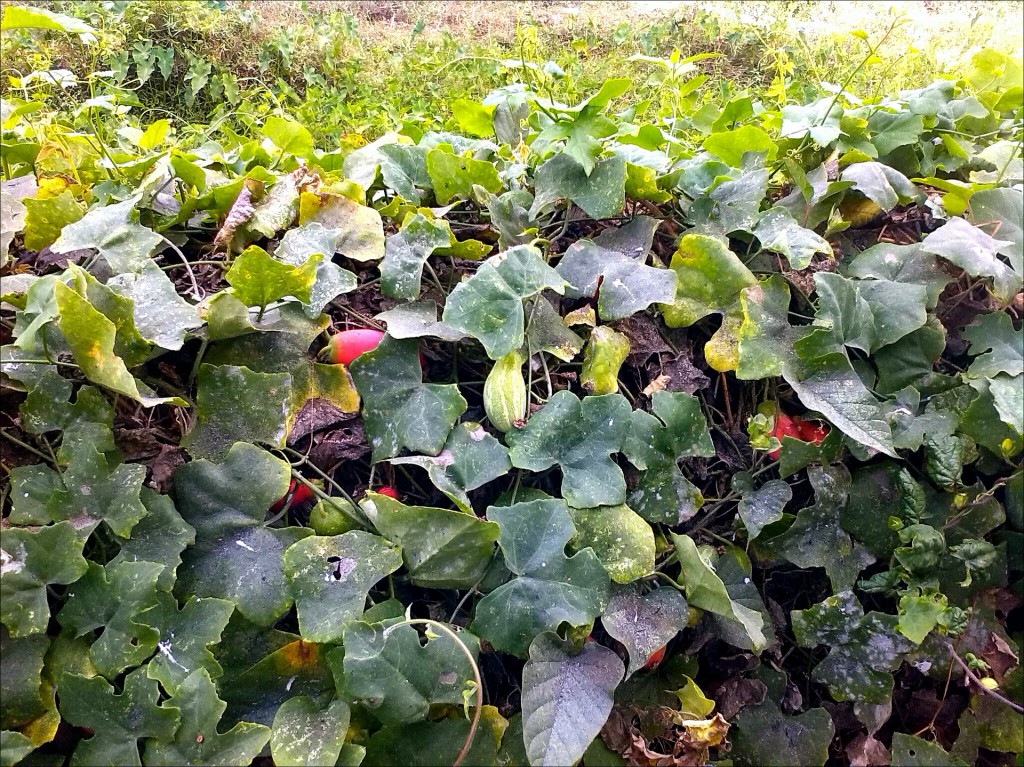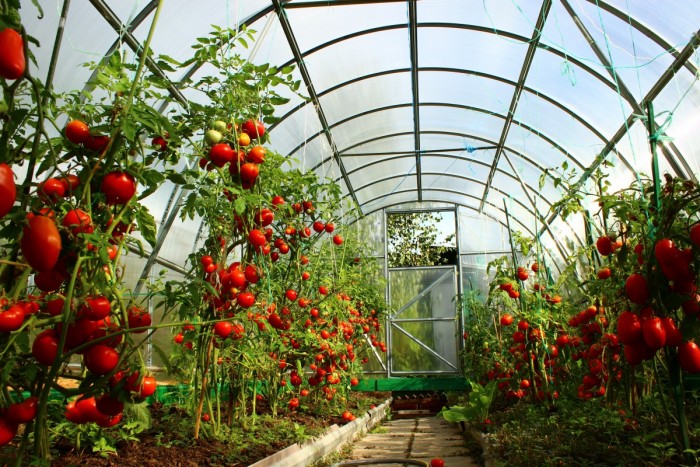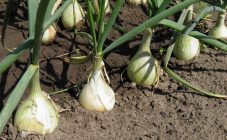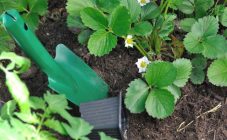Content:
It has long been no secret that some plants help each other to develop, while others, on the contrary, oppress each other. Thus, by choosing the right neighbors on the site, the gardener can get the maximum yield.
Conditions for growing corn
Corn is considered one of the most demanding plants. When growing it, it is important to observe the technology, climatic and soil conditions, the neighborhood in the garden. Now agronomists are working on a new, not demanding variety of corn, but so far everything has been fruitless, and gardeners have to adapt to the whims of the cultivated crop.
What conditions are necessary for the development and good yield of corn:
- The plant needs a warm climate. The seeds give their first shoots at a temperature of at least 10 ° C. But the optimum temperature for growing a crop is 25 ° C. And the closer the soil temperature is to the optimum, the faster the first greens appear. Any negative temperature, even short-term, reduces the percentage of seedlings. Corn develops very poorly at a temperature of 10 ° C, but it also does not tolerate heat well. At temperatures above 35 ° C, the plant does not develop, it brings a poor harvest.
- In low light, plant growth slows down, so it is planted in an open area.
- This crop tolerates drought well, but there are special watering requirements during fruit development. If during this period the required moisture level is not provided, then the corn crop can be lost.
- You can get a large number of ears on fertile and loose soil, while there should be no weeds in the garden.
- For fertilization, it is better to use organic substances and mineral fertilizers and apply them mainly during the growing season. It is very profitable to sow corn in the same place 2 times in a row.
Cultural compatibility
As mentioned earlier, not every culture is able to get along with others. At first glance, it may seem that this is a difficult science, but every gardener should understand the compatibility of cultures and what it is.
It should be noted that choosing the right neighbors increases yields and drives away pests. But how do you know which neighbors to choose?
There are certain criteria for this:
- Plants belonging to the same species should not be planted nearby, since the same nutrients are needed for their development. The seedlings will deplete the soil and will not receive the required amount of fertilizer themselves.
- When growing plants, take into account the depth of root germination - it should not be the same. If this is not observed, then the plants will not have enough moisture and nutrients.
- Each root system releases toxins: both harmful and positive effects on the neighbor in the garden.
- Neighbors are chosen from different families, otherwise the site will turn into a breeding ground for diseases.
- The height of the crops should be different. For example, planted corn will shade cucumbers during their ripening period.The exception is the proximity of sunflower and corn.
- Plants must have a different ripening period, then they will receive all the necessary nutrients. For example, onions planted near and carrots. Vegetables develop in different ways and different nutrients are needed for their development. In addition, carrots provide a lifesaving shade for the onion.
Which crops can be planted with corn, and which cannot
The neighborhood of corn with other plants can be regarded in different ways: for some it helps to grow, while others give a poor harvest.
Planting corn and peas together gives a good result. The peas do not in any way affect the corn crop, which, in turn, becomes a support for the peas. While developing, it weaves along the stem of a tall neighbor and receives more sunlight. It is also worth considering that their root systems have different lengths, so the plants do not compete with each other.
Corn can also be grown alongside squash, pumpkin, and potatoes. They do not harm each other. The only thing to consider is that a lot of space is needed for the development of zucchini. Therefore, you can plant the main area with zucchini, and plant corn side by side in a checkerboard pattern. A little shade from a tall plant will save low crops on hot days.
It is forbidden to plant tomatoes and cabbage next to corn. The fact is that these crops require a lot of light for development, and a tall plant, on the contrary, will arrange a shade for the whole day. In addition, tomatoes are considered selfish in the garden. It's hard for them to find neighbors. Therefore, it is better to grow them separately.
Useful neighborhood of corn with other plants
Many other plants are also considered good neighbors of corn in the garden. Just like peas, beans and beans are positive companions. As a result of such a neighborhood, you can grow a large harvest of both. This favorable neighborhood can be explained by many factors. For example, it will be much easier to harvest, the gardener will save space, the length of the roots and the ripening time of the neighbors are different. This also applies to herbs that receive the necessary shade, and in response, drive away the smell of pests.
Also, when deciding what you can plant corn on the same bed, it is worth considering another factor. For example, spinach holds back moisture in the soil and weeds growth, that is, until corn is replaced by small weeds.
Such neighbors of corn in the garden, like melons and watermelons, will be protected from excessive solar radiation, wind, hail, which means they will bring a good harvest.
The plant in question does not really like compatibility with celery and beets. You can't plant corn next to radishes, sweet and hot peppers, cauliflower, as these plants, like tomatoes, love sunlight.
Some gardeners are divided over what can be planted next to corn. When solving such a question, it is necessary to build on personal experience and advice from gardeners. The above listed neighborhood is taken into account when planting plants in open ground and in a greenhouse.
Experienced gardening tips
Experienced gardeners use the technology of combined beds to obtain the greatest yield. For example, a gardener must clearly understand that it is possible to plant next to corn, it is also important to observe crop rotation, as incorrect planting alternation will lead to loss of yield.
It was already mentioned about the factors affecting the yield, but it is worth clarifying a couple more nuances:
- Plants planted nearby should have similar conditions of maintenance: light, fertilizers, humidity. Compatibility of maize with other plants is only possible if the maximum number of conditions described above is met. You can also draw up the correct scheme, for example, when taking into account the humidity in the center of the garden, plant more moisture-loving plants or place tall plants so that they receive the maximum amount of light.
- Crop rotation must be observed. If related plants are planted in the same place, they will lack nutrients. A plant planted in the first year will draw out all the necessary substances from the soil, and next year a related plant will be in short supply, that is, the yield will be much smaller. In addition, during the first year, the soil accumulates diseases and pests that will infect the plant in the second year.
Why is it worth using a mixed fit:
- saving space;
- sowing flowers and fragrant plants saves from pests and diseases. For example, it is recommended to plant rosemary next to beans. But with what to plant corn on the same bed? For example, this plant loves aphids, then it is beneficial to plant nasturtium next to it. The scent of the flower will scare off the aphids and the corn will survive.
From the above, we can draw a conclusion and highlight the negative consequences of incorrect combination of cultures:
- poor productivity;
- the appearance of pests and diseases that will prevent the plant from developing or provoke its death;
- improper adherence to moisture requirements on plants, fungi and mold may appear;
- toxins released during the growth of some plants can kill neighbors.
Experienced gardeners plan to plant before the snow has melted. For a correct layout, you need to follow these steps:
- The area of the site is drawn on paper. Depicts existing buildings and planted perennials. Future buildings are also indicated. This diagram can be copied. Then next year you will not have to draw all over again.
- The entire plot must be divided into zones: a garden, a recreation area, a vegetable garden, and so on. You can even specify where the shadow from buildings and planted trees will fall. Thus, you can understand where to plant shade-loving plants.
- Make a list of what plants need to be planted. It is not recommended to change the list during boarding. After that, they begin to place crops on the territory, taking into account the compatibility of crops, relief, humidity, plant requirements and much more.
- There are several requirements to determine how much to plant vegetables. First, you need to consider which vegetables the family loves most, and which they practically do not consume. After, according to special tables that are developed for each crop, they determine how much to plant.
Compliance with these simple requirements will bring the gardener a good harvest and will greatly simplify difficult work. The gardener can minimize the pesticide treatment of the site, and also reduce the need for fertilizers.
